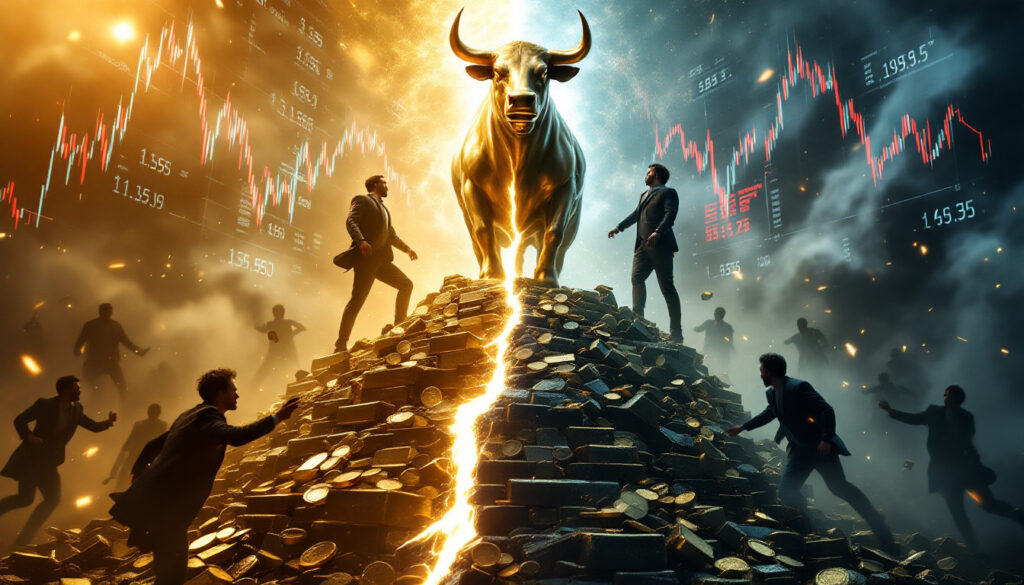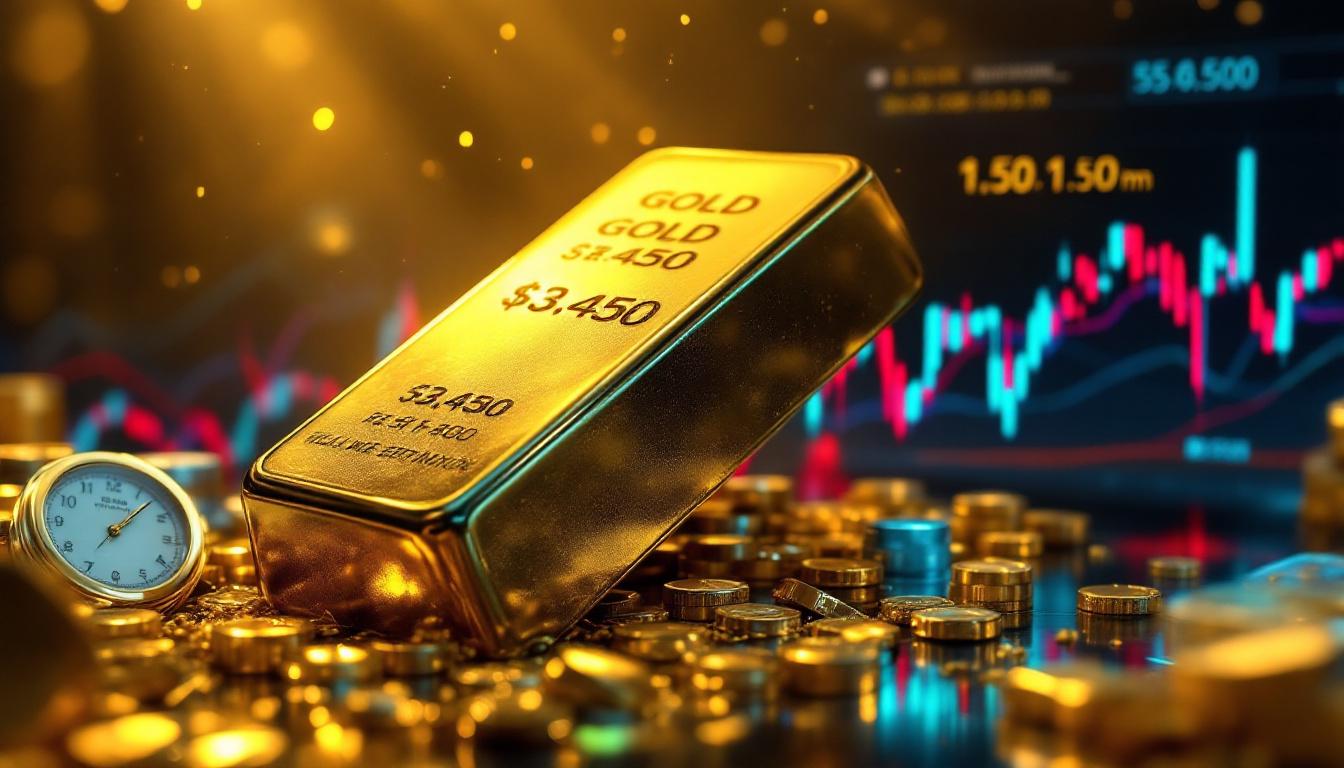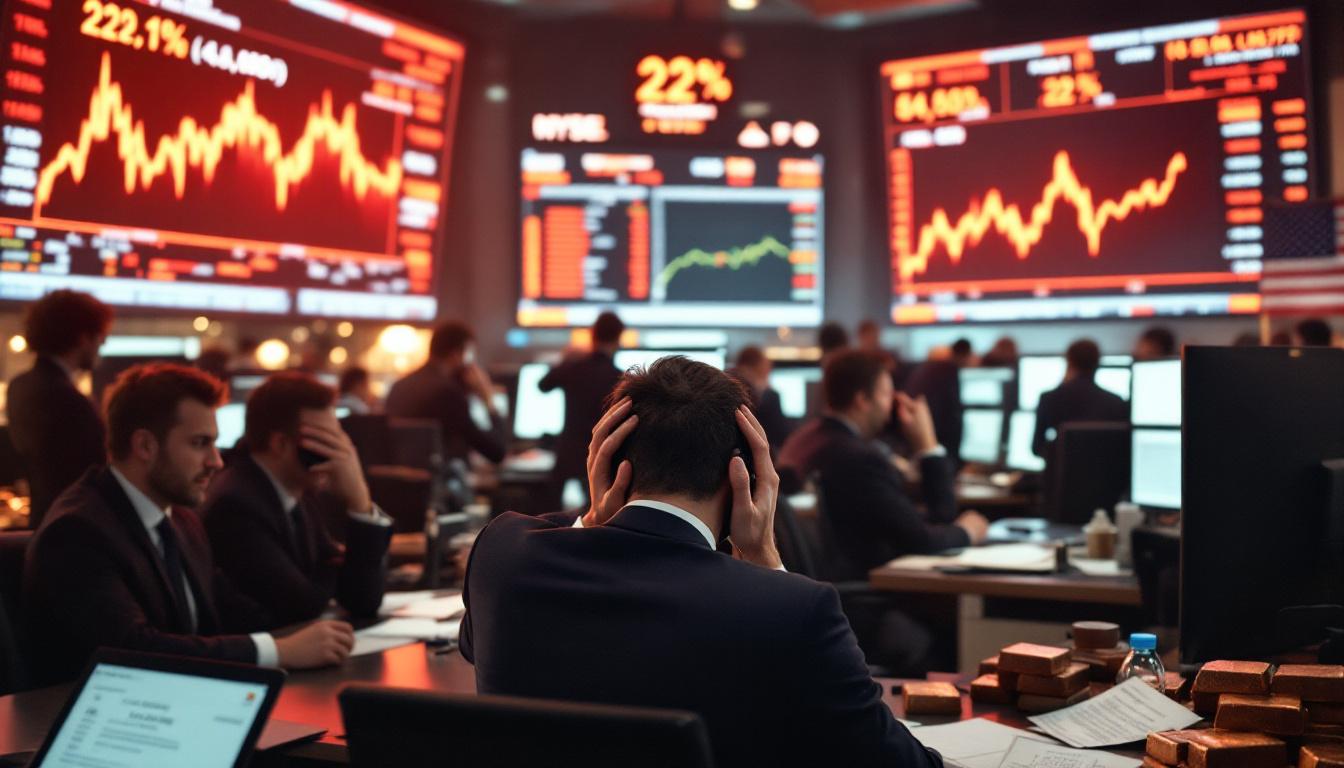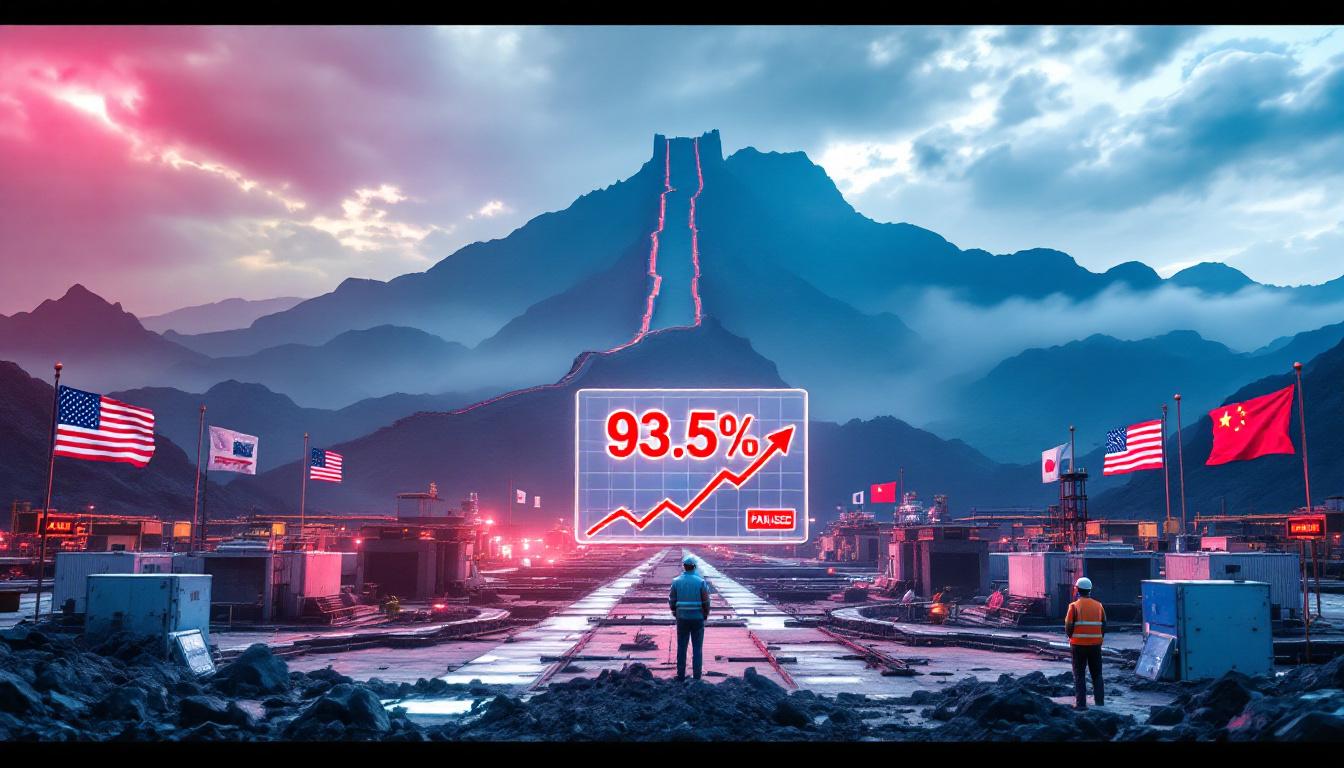How Are Geopolitical Risks Reshaping Global Markets?
Global markets are undergoing significant realignments driven by escalating geopolitical risks and trade tensions, with profound implications for investment strategies. The International Monetary Fund (IMF) warns that geopolitical events, including trade conflicts, could trigger severe stock market corrections and financial instability. Concurrently, gold has reached unprecedented highs, driven by central bank acquisitions, while retail investor participation remains subdued, signaling potential undervaluation. This report examines the interplay between market dynamics explained, precious metals performance, and strategic investor responses.
IMF Warnings on Market Volatility
The IMF's Global Financial Stability Report underscores the systemic risks posed by geopolitical shocks, noting that trade tensions can induce "large corrections in stock prices" and "extreme portfolio losses". The report emphasizes the rise in conflict-related economic disruptions, urging institutions to prepare for "unexpected tail risks" through robust hedging strategies. For instance, the U.S. equities market experienced a 7.2% sell-off following recent tariff announcements, reflecting heightened volatility.
Signs of Market Repricing
U.S. equities have entered a downtrend, with the S&P 500 declining 4.3% month-to-date amid tariff uncertainties. The U.S. Dollar Index (DXY) breached the critical 100 threshold, sliding to 98.5 against major currencies, as investors anticipate retaliatory measures from trading partners. Traditional assets like Treasury bonds, typically safe havens, have also faltered, with 10-year yields spiking to 4.6% despite escalating risks—a deviation from historical norms.
Billionaire Warnings and Economic Concerns
Ray Dalio, founder of Bridgewater Associates, cautions that mishandling current economic pressures could lead to "something worse than a recession," including a breakdown of the global monetary order. Dalio highlights structural shifts in domestic governance and international relations, exacerbated by unsustainable U.S. debt levels ($36–37 trillion), which deepen systemic vulnerabilities beyond cyclical downturns.
What's Driving Gold's Record Performance?
Gold's New All-Time Highs
Gold achieved 39 record highs in the past year and 16–20 year-to-date, yet retail investors remain largely absent. Central banks have driven this surge, purchasing ~1,000 tons annually over three years—40–60% above previous peaks—signaling a strategic pivot toward gold as a Tier-1 reserve asset. The gold-silver ratio remains elevated at 98–100, far exceeding the 35–50 range typical of bull markets, indicating silver's undervaluation.
Central Bank Buying Patterns
Central banks accumulated 3,000 tons of gold since 2022, reflecting distrust in fiat currencies and the weaponization of the U.S. dollar. China's gold ETF inflows surpassed Q1 2025 totals within April's first 11 days, overtaking U.S. ETFs and underscoring Eastern investors' preference for tangible assets. This divergence highlights shifting perceptions of gold's role in portfolios: wealth insurance in the West versus a cornerstone of reserves in the East.
Why Gold Remains Undervalued
Despite record prices, physical gold and silver premiums are at 30-year lows, suggesting subdued retail demand. Historical parallels, such as the 2008 crisis, indicate that retail participation often lags institutional moves by 12–18 months, implying significant upside potential once mainstream investors re-engage. The latest gold market trends further confirm this pattern of institutional leadership preceding retail participation.
How Are Trade Tensions Affecting Global Capital Flows?
U.S.-China Trade Relations
China has adopted a confrontational stance, vowing to continue trade disputes "to the end," with officials warning that further tariffs could halt bilateral trade entirely. Markets reacted negatively, with the Shanghai Composite dropping 5.8% and the Nasdaq shedding 6.2% over two weeks. However, analysts speculate that these measures aim to force favorable negotiations rather than sever ties permanently.
Treasury Market Dynamics
Unusual Treasury sell-offs, despite their safe-haven status, have raised concerns about China liquidating holdings as retaliation. The 10-year yield's surge to 4.6% contrasts with its typical inverse relationship to risk assets, signaling eroded confidence in U.S. fiscal policy.
Dollar Reserve Currency Status
While the dollar remains irreplaceable as the global reserve currency, central banks are hedging against its decline via gold acquisitions. The U.S. debt-to-GDP ratio (130%) and political polarization further undermine long-term dollar stability, prompting alternatives like BRICS currencies to gain traction. Trump's commodity impact has added another layer of complexity to these currency dynamics.
What Are the Price Projections for Precious Metals?
Gold Price Outlook
Gold could reach $3,800–$5,700 in this cycle, representing a 2–3x gain from its 2011 peak. Persistent geopolitical risks and trade tensions and monetary expansion may propel prices to $4,000 by late 2025, with a 12–15% annualized return trajectory.
Silver Price Potential
Silver's 45–50-year cup-and-handle breakout suggests a target of $90–100, a 200% surge from current levels. Its industrial applications in renewable energy and AI infrastructure could accelerate gains, potentially exceeding $50 by year-end.
Market Timing Considerations
Gold typically recovers within 2–3 days after initial equity-driven sell-offs, as seen during COVID-19 and the 2008 crisis. Margin calls force leveraged investors to liquidate precious metals first, creating buying opportunities for cash-ready participants.
How Should Investors Approach Precious Metals in the Current Environment?
Investment Strategy Considerations
Gold serves as "wealth insurance," while silver offers asymmetric upside. Physical metals mitigate counterparty risks, particularly amid potential financial system disruptions. Allocations of 5–15% are recommended, favoring sovereign coins and bars with low premiums. The gold ETFs 2024 guide provides additional options for those preferring securitized exposure.
Avoiding Common Pitfalls
Investors should verify dealer buyback policies and avoid modern "collectibles" with inflated premiums. Trusted dealers, vetted by organizations like the Professional Numismatists Guild (PNG), reduce fraud risks.
Impact of Federal Reserve Policy
Upcoming Fed leadership changes could prompt policy shifts, with rate cuts likely inflating precious metals prices. The White House's fall 2025 interviews for Jerome Powell's successor may introduce dovish candidates, further buoying gold.
FAQs About Geopolitical Risks and Precious Metals
How do geopolitical risks affect gold prices?
Geopolitical risks typically drive investors toward safe-haven assets like gold, pushing prices higher. During the current period of trade tensions and global uncertainty, gold has reached multiple new all-time highs as central banks and institutional investors seek stability outside traditional currency markets.
Why does gold sometimes fall during market crashes?
During sharp market downturns, gold may initially sell off as investors face margin calls and need to liquidate their most liquid assets to cover positions. However, this typically reverses within 2-3 days as investors recognize gold's safe-haven status and buy at discounted prices.
What does the gold-silver ratio indicate about current market conditions?
The elevated gold-silver ratio (currently around 98-100) indicates that retail investors remain largely absent from the precious metals market. During typical bull markets, this ratio falls to 35-50 as retail participation increases and silver outperforms gold on a percentage basis.
How are central banks changing their approach to gold reserves?
Central banks have dramatically increased gold purchases over the past three years, buying approximately 1,000 tons annually. This represents a 40-60% increase over previous high years and suggests a strategic shift away from dollar-denominated assets toward physical gold as a tier-one reserve asset.
Conclusion
Geopolitical fragmentation and monetary instability are reshaping global markets, privileging tangible assets like gold and silver. Central banks' strategic accumulation and retail investors' eventual re-entry suggest sustained precious metals appreciation. Recent global commodities insights confirm this trend extends beyond precious metals to broader commodities markets. Investors must prioritize liquidity, diversification, and dealer due diligence to navigate this volatile landscape effectively.
Ready to Discover Major Mining Opportunities Before the Market?
Stay ahead of significant ASX mineral discoveries with real-time alerts from Discovery Alert's proprietary Discovery IQ model, transforming complex exploration data into actionable investment insights. Explore why historic discoveries generate substantial returns by visiting our dedicated discoveries page.




